new posts in all blogs
Viewing: Blog Posts Tagged with: Need to Know, Most Recent at Top [Help]
Results 1 - 25 of 191
How to use this Page
You are viewing the most recent posts tagged with the words: Need to Know in the JacketFlap blog reader. What is a tag? Think of a tag as a keyword or category label. Tags can both help you find posts on JacketFlap.com as well as provide an easy way for you to "remember" and classify posts for later recall. Try adding a tag yourself by clicking "Add a tag" below a post's header. Scroll down through the list of Recent Posts in the left column and click on a post title that sounds interesting. You can view all posts from a specific blog by clicking the Blog name in the right column, or you can click a 'More Posts from this Blog' link in any individual post.

By: Kathy Temean,
on 1/7/2015
Blog:
Writing and Illustrating
(
Login to Add to MyJacketFlap)
JacketFlap tags:
picture books,
inspiration,
publishers,
submission guidelines,
authors and illustrators,
opportunity,
Flashlight Press,
Picture book publisher,
need to know,
Places to Submit,
Add a tag
FlashLight Press is celebrating their 10 year in the publishing business. They are a small publisher and only publish a few books each year, but they specialize in picture books. Check out their awards pages. I was impressed with what they have accomplished. You may even recognize some of the artwork on their covers, since many of their illustrators have been featured on Illustrator Saturday. Click on the illustration that shows off some of the character in their books to look over their book catalog.

SUBMISSION GUIDELINES:
If you have a story you want FLASHLIGHT PRESS to consider:
First, make sure your manuscript fits the following criteria:
- is a fiction picture book (NOT a concept book, non-
fiction, an early reader, a chapter book, or a YA novel)
- has a universal theme (but no holiday themes, and no
talking inanimate objects)
- deals with family or social situations
- targets 4-8 year olds
- is between 500-1,000 words
- feels like a Flashlight book (Please read about our
books to determine whether your story really feels like a
fit.)
If your manuscript meets their criteria:
- send a query email describing your story (plot, word
count, target audience, what makes this story unique) and
a bit about yourself, to Shari Dash Greenspan at
[email protected]
- do not send snail mail queries. We disregard and
recycle all snail mail submissions.
- do not send attachments (instead, type your query
into the body of the email.)
- do not send your full manuscript (neither attached nor
pasted into the email).
Then:
- you will receive an automated reply within a week or so
that we received your email query.
- if we wish to see your full manuscript, we’ll let you know
by email within a month or so. If you do not receive an
email requesting your full manuscript, please realize that
your story was not considered a fit for our line.
Manuscripts, when requested, will be evaluated within three to
four months.
Important tip: unless you are also an artist, do not include
illustrations with a requested manuscript.
If you create artwork that you want them to consider:
- Explore our site to be sure that your style could be a fit.
- Please do not send any samples by snail mail – we are going
paperless and will recycle all paper samples we receive.
- Do not send attachments. Instead, please paste a few sample
jpegs into an email. Then we don’t have to open any files and
can easily view your artwork.
- Do include links to your online portfolio in your email.
- Send the email to [email protected].
- We‘ll keep your information on file for future reference, and will
be in touch if we have any projects to offer.
Make this the year you revise and submit. Gook Luck!
Talk tomorrow,
Kathy
Filed under:
authors and illustrators,
inspiration,
need to know,
opportunity,
picture books,
Places to Submit,
publishers Tagged:
Flashlight Press,
Picture book publisher,
submission guidelines 


By: Kathy Temean,
on 12/17/2014
Blog:
Writing and Illustrating
(
Login to Add to MyJacketFlap)
JacketFlap tags:
Editor & Agent Info,
need to know,
Places to Submit,
Kendra Shedenhelm,
Kimberly Brower,
Rachel Marks,
RF Literary,
Agent,
reference,
authors and illustrators,
opportunity,
Add a tag
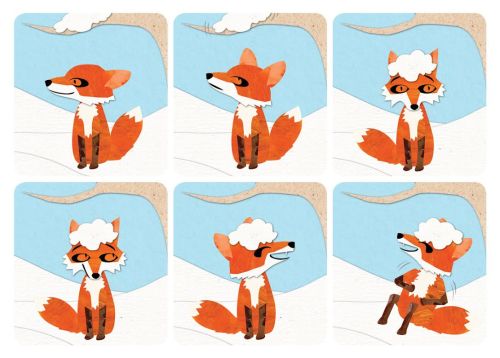
Kendra Shedenhelm sent this illustration in for us to enjoy. It makes me think of the song that was out a year ago titled, “What does the Fox say.” Must be Tee Hee Hee. The fourth book she has illustrated, “You, the Magician,” was released in November 2014, and can be viewed at http://www.youthemagician.com. http://www.kendrashedenhelm.com/
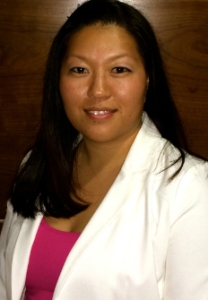
Kimberly Brower, Agent
Kimberly fell in love with reading when she picked up her first Babysitter’s Club book at the age of seven and hasn’t been able to get her nose out of a book since. Reading has always been her passion, even while pursuing her business degree at California State University, Northridge and law degree at Loyola Law School, Los Angeles. By joining the Rebecca Friedman Literary Agency in 2014, she has been able to merge her legal background with her love of books. Although she loves all things romance, she is also searching for books that are different and will surprise her, with empathetic characters and compelling stories.
Kimberly is interested in both commercial and literary fiction, with an emphasis in women’s fiction, contemporary romance, mysteries/thrillers, new adult and young adult, as well as certain areas of non-fiction, including business, diet and fitness.
Follow her on Twitter at @kimberlybrower
 Rachel Marks, Agent
Rachel Marks, Agent
Rachel began her career in the entertainment industry. Starting out as a production assistant, she has worked on popular shows like So You Think You Can Dance, The Biggest Loser, and The Golden Globe Awards Show. In 2011 her focus shifted to publicity and marketing where she worked for Sony Computer Entertainment, assisting in the launches of several video game titles. She is a graduate of University of Miami and lives in Los Angeles.
Rachel is interested in young adult, science fiction, fantasy, new adult and romance.
Follow her on Twitter at
How to submit: Email a query to Kimberly at kimberly [at] rfliterary.com or Rachel [at] rfliterary.com. Submit a brief query letter and your first chapter (pasted into the email, not to exceed fifteen double-spaced pages) and for security purposes, do not include any attachments unless specifically requested.
Talk tomorrow,
Kathy
Filed under:
Agent,
authors and illustrators,
Editor & Agent Info,
need to know,
opportunity,
Places to Submit,
reference Tagged:
Kendra Shedenhelm,
Kimberly Brower,
Rachel Marks,
RF Literary 


By: Kathy Temean,
on 12/14/2014
Blog:
Writing and Illustrating
(
Login to Add to MyJacketFlap)
JacketFlap tags:
picture books,
chapter books,
publishers,
submissions,
Middle Grade Novels,
authors and illustrators,
opportunity,
need to know,
Artist opportunity,
Places to Submit,
Scarletta Press,
Add a tag
 SCARLETTA PRESS accept submissions ONLY during their reading period (September 1 to June 1).
SCARLETTA PRESS accept submissions ONLY during their reading period (September 1 to June 1).
SUBMISSIONS ARE CURRENTLY OPEN.
They use Submittable.
While they seek to publish new voices missing from the literary world, they also want to make sure your manuscript will fit their genre community. The books they choose to publish are intellectually stimulating, adding relevant knowledge to readers’ minds. Their Junior Readers and Kids imprints focus on literature and picture books with educational twists, exciting illustrations, and engaging plots.
Genres they focus on include:
- Children’s Fiction
- Middle-grade Fiction
- Educational Fiction/Nonfiction
- Picture Books
They do not publish plays, screenplays, short story collections, or poetry.
With your cover letter, please submit a synopsis of your book and one or two chapters, no more than 30 pages. They accept both agented and unagented manuscripts.
Illustrators: Don’t forget that picture book publishers need you, too.
You may submit electronic submissions through Submittable. If you are including images–no more than one total file–please make sure to save and upload them in a .pdf format.
You may send your hard copy submission to:
Editor
Scarletta
1201 Currie Avenue
Minneapolis, MN 55403
Please include a self-addressed stamped envelope (SASE) with any hard copy submissions to receive our response.
Special Instructions from Scarletta Publishers
*Please do not send submissions directly to any of our staff members.
**Note that due to the number of submissions we receive, we do not have the ability to notify authors of having received their submissions. While we understand that you may be anxiously awaiting a response to your submission, we ask that you do not send your manuscript more than once or send multiple inquiries about your submission’s status.
Talk tomorrow,
Kathy
Filed under:
Artist opportunity,
authors and illustrators,
chapter books,
Middle Grade Novels,
need to know,
opportunity,
picture books,
Places to Submit,
publishers,
submissions Tagged:
Scarletta Press 

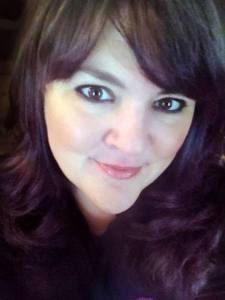 Amazon’s real-time experiment with the livelihoods they have provided to their exclusive self-published KDP authors through Kindle Unlimited (KU) continues to draw concern on online forums. The most recent scrutiny stems from a post by bestselling author Holly (H.M.) Ward on Kindle Boards from the Friday after Thanksgiving, which continues to draw follow-up remarks.
Amazon’s real-time experiment with the livelihoods they have provided to their exclusive self-published KDP authors through Kindle Unlimited (KU) continues to draw concern on online forums. The most recent scrutiny stems from a post by bestselling author Holly (H.M.) Ward on Kindle Boards from the Friday after Thanksgiving, which continues to draw follow-up remarks.
Ward said that her Amazon income dropped substantially when she participated in Kindle Unlimited: “[I] had my serials in it for 60 days and lost approx 75% of my income [from KDP]. Thats counting borrows and bonuses. My sales dropped like a stone. The number of borrows was higher than sales. They didn’t compliment each other, as expected.” She added, “I planned on giving it 90 days, but I have a kid in the hospital for long term care and I noticed my spending was going to exceed my income–by a lot. I couldn’t wait and watch thing plummet further. I pulled my books. That was on Nov 1, & since then my net revenue has gone up. I’m now at 50% of where I was pre-KU. During the time I was in KU, I had 2 new releases. Neither performed vastly different than before. They actually earned far less (including borrows).”
Perhaps more resonant for self-published authors broadly, she wrote, “This model needs to be changed for it to work. Authors shouldn’t be paid lottery style.” (In the current system, Amazon decides, retroactively, how much money to allocate to authors for each KU borrow. The amount paid per borrow has been dropping since the program launched in late July.)
In follow-up comments, Ward added, “That’s why I posted this info. I assumed I was the only one. I thought I was too stupid to make KU work, but both months I was an ‘All Star’ so something just doesn’t work. Plus other heavy hitters starting talking, telling me a similar story. The model itself is flawed….I have 60+ books, lots of new titles, and if I’m at the top of the KU list for the entire 60 days I was enrolled and lost a LOT of money, then something is wrong with the model.” (By our own data, Ward has had 12 works appears on bestseller lists during 2014.) She also indicated the KU experience affected all of her titles at Amazon, even the ones that were not part of the subscription service, “because buyers changed into borrowers, who in turn did not spend money on my other titles.” And “Ditto on audio sales. They’ve vanished.”
A number of other authors joining the forum tell stories similar to Ward’s, though there are also authors who say that KU has increased their net earnings. One common belief is that the current KU economics favor short works — “KU has allowed for shorter works to steal marketshare from longer works, pushing them out of sales rankings, search result rankings, also boughts, top 100 lists, and overall visibility. You think I’m wrong? Go read any of the popular erotica forums, those writers are cleaning up like it’s 2012 again.”
Self Published authors. We need to keep our eyes open for more info on this subject.
Talk tomorrow,
Kathy
Filed under:
need to know,
publishers,
Publishing Industry Tagged:
Amazon Kindle Unlimited,
H. M. Ward,
Self-Publishing 


By: Kathy Temean,
on 12/4/2014
Blog:
Writing and Illustrating
(
Login to Add to MyJacketFlap)
JacketFlap tags:
Call for Poems,
Joan Charles,
Submitting your article,
inspiration,
authors and illustrators,
opportunity,
need to know,
Marketing a book,
Places to sumit,
Pendred Noyce,
Call for Illustrations,
Add a tag

This wonderful holiday inspired illustration was sent in by Joan Charles. She is an illustrator, writer, graphic designer. Her work can be found in gallery exhibitions, magazines, and books. She illustrated the award-winning middle grade adventures Lost in Lexicon and The Ice Castle, written by Pendred Noyce. http://www.joancharles.com
In the last few months I have been asked how someone gets on Writing and Illustrating to show off their work, get an interview, and market a book. Here are the things I consider:
1. Do I know you? Have I met you?
2. Do you follow my blog?
3. Do you leave comments?
4. Do you promote Writing and Illustrating on your website, facebook, or blog?
5. Have you tweeted, reblogged, facebooked or shared information posted on Writing and illustrating?
6. Have you ever been featured on Writing and Illustrating?
7. Have you ever written or shared any information on Writing and Illustrating that would help other writers or illustrators?
8. If you haven’t done any of the above, do you have something to share that the readers who be interested in hearing about?
9. Have you published a book? Is there anything interested in how it got published or something you did that would interest readers?
10. Are you willing to do a book give-a-way?
I can’t know everyone by meeting them in person, but I can get to know you by leaving a comments or following my blog. I have many friends that I hope to meet someday. If you are writing or illustrating a book, you should be looking for people like me who have a large amount of followers and start working to make a connection.
I’m happy for everyone who gets something published, wins a contest, gets an agent, or wins an award and will be happy to include you in a Kudos post. But if you fit into the first seven on the list, you are considered family and will always get your successes promoted on Writing and Illustrating.
Tips: You shouldn’t wait until your book is about to come out to start building connections. Start doing that right now. Think about what type of things you could share that would help other writers. Maybe you don’t feel like you have anything to share, but I bet you do if you think about it. Have you attended a workshop or conference? Have you read a book on how to write or illustrate? You may be revising a story and have an epiphany. Did you learn anything useful during a critique? Maybe you run into an agent or editor who shared knowledge that could be shared? The substance of all these things could be used to write an interesting article. It would be a great way to get your name out there and be noticed.
Just remember when you want to promote yourself, you can’t look like that is all you are interested in doing.
Submissions: Send to Kathy.temean (at) gmail (dot) com. In subject area write, SUBMISSION ARTICLE FOR WRITING AND ILLUSTRATING. Introduce yourself, bio, and send me your article or express you interest in writing an article on…(subject and your idea).
I love when people have a topic they would like to write about that will help other writers and illustrators. If there is not enough meat to the article, I will give you some ideas or suggestions to pump it up. So write something interesting, helpful and start submitting your article to build your list of places and people who will help spread the words when success jumps in your path.
I am sure you have gone to blogs or signed up for newsletters that end up just talking about their book or books. If you haven’t you are lucky. I know I have and it is very disappointing. In fact that tactic could turn someone off and cause them not to buy anything with your name on it. So be careful.
Don’t get buried in only thinking about writing only for your own blog. If you get your article on another blog, you are getting access to a whole new group of people who might end up following your blog. Be smart. Even if you have ten published books, do not turn down someone with a large following saying things like, “I want people to come to my blog, not yours.” This is a statement from someone who doesn’t understand the importance of marketing and someone not savvy enough to see how getting exposure to thousands of new people could be a huge win.
Remember: I am not the only blog with a large following. There are many that could provide opportunities for you.
I am looking to do a Kudos post next week. Any good things happening out there? Let me know.
Call for Christmas Poems or Hanukkah Poems and or illustrations. Will be posting them later this month. Send to Kathy.temean(at)gmail.com Put December Illustration or December Poem in subject area. Thanks!
Talk tomorrow,
Kathy
Filed under:
authors and illustrators,
inspiration,
Marketing a book,
need to know,
opportunity,
Places to sumit Tagged:
Call for Illustrations,
Call for Poems,
Joan Charles,
Pendred Noyce,
Submitting your article 


By: Kathy Temean,
on 12/4/2014
Blog:
Writing and Illustrating
(
Login to Add to MyJacketFlap)
JacketFlap tags:
Call for Poems,
Joan Charles,
Submitting your article,
inspiration,
authors and illustrators,
opportunity,
need to know,
Marketing a book,
Places to sumit,
Pendred Noyce,
Call for Illustrations,
Add a tag

This wonderful holiday inspired illustration was sent in by Joan Charles. She is an illustrator, writer, graphic designer. Her work can be found in gallery exhibitions, magazines, and books. She illustrated the award-winning middle grade adventures Lost in Lexicon and The Ice Castle, written by Pendred Noyce. http://www.joancharles.com
In the last few months I have been asked how someone gets on Writing and Illustrating to show off their work, get an interview, and market a book. Here are the things I consider:
1. Do I know you? Have I met you?
2. Do you follow my blog?
3. Do you leave comments?
4. Do you promote Writing and Illustrating on your website, facebook, or blog?
5. Have you tweeted, reblogged, facebooked or shared information posted on Writing and illustrating?
6. Have you ever been featured on Writing and Illustrating?
7. Have you ever written or shared any information on Writing and Illustrating that would help other writers or illustrators?
8. If you haven’t done any of the above, do you have something to share that the readers who be interested in hearing about?
9. Have you published a book? Is there anything interested in how it got published or something you did that would interest readers?
10. Are you willing to do a book give-a-way?
I can’t know everyone by meeting them in person, but I can get to know you by leaving a comments or following my blog. I have many friends that I hope to meet someday. If you are writing or illustrating a book, you should be looking for people like me who have a large amount of followers and start working to make a connection.
I’m happy for everyone who gets something published, wins a contest, gets an agent, or wins an award and will be happy to include you in a Kudos post. But if you fit into the first seven on the list, you are considered family and will always get your successes promoted on Writing and Illustrating.
Tips: You shouldn’t wait until your book is about to come out to start building connections. Start doing that right now. Think about what type of things you could share that would help other writers. Maybe you don’t feel like you have anything to share, but I bet you do if you think about it. Have you attended a workshop or conference? Have you read a book on how to write or illustrate? You may be revising a story and have an epiphany. Did you learn anything useful during a critique? Maybe you run into an agent or editor who shared knowledge that could be shared? The substance of all these things could be used to write an interesting article. It would be a great way to get your name out there and be noticed.
Just remember when you want to promote yourself, you can’t look like that is all you are interested in doing.
Submissions: Send to Kathy.temean (at) gmail (dot) com. In subject area write, SUBMISSION ARTICLE FOR WRITING AND ILLUSTRATING. Introduce yourself, bio, and send me your article or express you interest in writing an article on…(subject and your idea).
I love when people have a topic they would like to write about that will help other writers and illustrators. If there is not enough meat to the article, I will give you some ideas or suggestions to pump it up. So write something interesting, helpful and start submitting your article to build your list of places and people who will help spread the words when success jumps in your path.
I am sure you have gone to blogs or signed up for newsletters that end up just talking about their book or books. If you haven’t you are lucky. I know I have and it is very disappointing. In fact that tactic could turn someone off and cause them not to buy anything with your name on it. So be careful.
Don’t get buried in only thinking about writing only for your own blog. If you get your article on another blog, you are getting access to a whole new group of people who might end up following your blog. Be smart. Even if you have ten published books, do not turn down someone with a large following saying things like, “I want people to come to my blog, not yours.” This is a statement from someone who doesn’t understand the importance of marketing and someone not savvy enough to see how getting exposure to thousands of new people could be a huge win.
Remember: I am not the only blog with a large following. There are many that could provide opportunities for you.
I am looking to do a Kudos post next week. Any good things happening out there? Let me know.
Call for Christmas Poems or Hanukkah Poems and or illustrations. Will be posting them later this month. Send to Kathy.temean(at)gmail.com Put December Illustration or December Poem in subject area. Thanks!
Talk tomorrow,
Kathy
Filed under:
authors and illustrators,
inspiration,
Marketing a book,
need to know,
opportunity,
Places to sumit Tagged:
Call for Illustrations,
Call for Poems,
Joan Charles,
Pendred Noyce,
Submitting your article 


By: Kathy Temean,
on 11/8/2014
Blog:
Writing and Illustrating
(
Login to Add to MyJacketFlap)
JacketFlap tags:
Editors,
authors and illustrators,
Publishing Industry,
opportunity,
children writing,
Matt de la Pena,
need to know,
Agent and Editor Critiques,
Private Dinner in NYC Jacqueline Woodson,
SCBWI Discounted Registrations,
We Nee Diverse Books,
Agent,
Events,
Add a tag
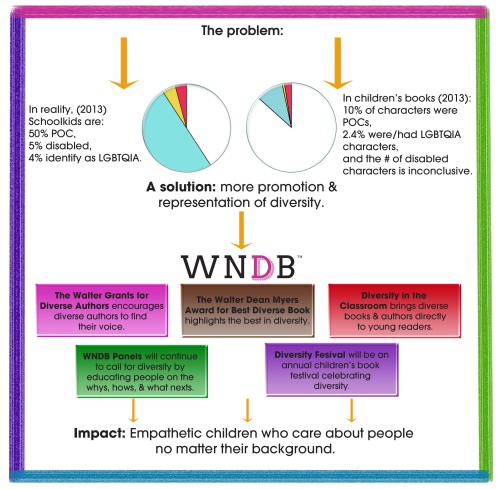
You can help make a difference by making a donation.
There are lots of things you can receive by contributing to the cause. Example: AGENT critiques and EDITOR critiques from editors at Big 5 publishing houses.
An unforgettable opportunity to have a private dinner in NYC with incredible bestselling & award-winning authors Jacqueline Woodson AND Matt de la Peña
Coming soon – a limited number of discounted registrations for Fans of SCBWI – including a VIP critique at their annual LA conference in 2015! Many thanks to Lin Oliver, Sara Rutenberg and Kim Turrisi for offering this. Can’t wait to see how quickly they go!
Here’s the link to the WNDB campaign: http://igg.me/at/diversebooks Maybe even find something you could give as a holiday gift with your donation.
Talk tomorrow,
Kathy
Filed under:
Agent,
authors and illustrators,
children writing,
Editors,
Events,
need to know,
opportunity,
Publishing Industry Tagged:
Agent and Editor Critiques,
Matt de la Pena,
Private Dinner in NYC Jacqueline Woodson,
SCBWI Discounted Registrations,
We Nee Diverse Books 


By: Kathy Temean,
on 10/19/2014
Blog:
Writing and Illustrating
(
Login to Add to MyJacketFlap)
JacketFlap tags:
publishers,
authors and illustrators,
Publishing Industry,
Royalties,
opportunity,
need to know,
Book Contracts,
Places to sumit,
Acquiring new and established authors,
Digital Publishing Company,
Polis Books,
Add a tag

Polis Books is an independent digital publishing company actively seeking new and established authors for our growing list. We are currently acquiring titles in the following genres. Submissions in the following genres should be to [email protected].
We are currently acquiring:
• Mystery
• Thriller
• Suspense
• Procedural
• Traditional crime (i.e. ‘cozies’)
• Science Fiction
• Fantasy
• Horror
• Supernatural
• Urban Fantasy
• Romance
• Erotica
• Commercial Women’s Fiction
• New Adult
• Young Adult
• Humor/Essays
We are not currently acquiring:
• Children’s Picture books
• Graphic novels
• Short stories or stand-alone novellas
• Religion
Submission Requirements:
• Query Letter
• Three Sample Chapters
• Author Biography (include information about personal blogs, Twitter handle, or other social media outlets you feel we should be aware of)
Query letter and sample chapters should be emailed as attachments (not in body of email) to:
[email protected]
They will reply requesting more information on a submission-by-submission basis.
They give a small advance and 40% royalties.
Talk tomorrow,
Kathy
Filed under:
authors and illustrators,
Book Contracts,
need to know,
opportunity,
Places to sumit,
publishers,
Publishing Industry,
Royalties Tagged:
Acquiring new and established authors,
Digital Publishing Company,
Polis Books 


By: Kathy Temean,
on 10/19/2014
Blog:
Writing and Illustrating
(
Login to Add to MyJacketFlap)
JacketFlap tags:
publishers,
authors and illustrators,
Publishing Industry,
Royalties,
opportunity,
need to know,
Book Contracts,
Places to sumit,
Acquiring new and established authors,
Digital Publishing Company,
Polis Books,
Add a tag

Polis Books is an independent digital publishing company actively seeking new and established authors for our growing list. We are currently acquiring titles in the following genres. Submissions in the following genres should be to [email protected].
We are currently acquiring:
• Mystery
• Thriller
• Suspense
• Procedural
• Traditional crime (i.e. ‘cozies’)
• Science Fiction
• Fantasy
• Horror
• Supernatural
• Urban Fantasy
• Romance
• Erotica
• Commercial Women’s Fiction
• New Adult
• Young Adult
• Humor/Essays
We are not currently acquiring:
• Children’s Picture books
• Graphic novels
• Short stories or stand-alone novellas
• Religion
Submission Requirements:
• Query Letter
• Three Sample Chapters
• Author Biography (include information about personal blogs, Twitter handle, or other social media outlets you feel we should be aware of)
Query letter and sample chapters should be emailed as attachments (not in body of email) to:
[email protected]
They will reply requesting more information on a submission-by-submission basis.
They give a small advance and 40% royalties.
Talk tomorrow,
Kathy
Filed under:
authors and illustrators,
Book Contracts,
need to know,
opportunity,
Places to sumit,
publishers,
Publishing Industry,
Royalties Tagged:
Acquiring new and established authors,
Digital Publishing Company,
Polis Books 


By: Kathy Temean,
on 10/4/2014
Blog:
Writing and Illustrating
(
Login to Add to MyJacketFlap)
JacketFlap tags:
awards,
SCBWI,
Competition,
authors and illustrators,
opportunity,
children writing,
Self Published Books,
need to know,
Self Published Authors,
Spark Award,
Add a tag

The Spark Award is an annual award that recognizes excellence in a children’s book published through a non-traditional publishing route.
THE INAUGURAL SPARK AWARD WINNERS
Deadline: Books may be submitted between September 15th and December 15th, 2014 for books published in the 2014 calendar year. Books published in previous years and re-issues are ineligible. Books submitted outside of that period will not be considered. You may only submit one title each award period.
Award: The winner and honor recipients will receive: a Spark seal to display on their book; commemorative plaque; the opportunity to have their book featured and autographed at an SCBWI conference of their choosing during the year the award is won, featured in the SCBWI online bookstore and publicized through SCBWI social networking sites. The winners will also get the opportunity to attend any conference of their choice tuition free (other than for extras such as critiques and intensives). Winners will be announced in March 2015.
Guidelines:
1. You must be a current SCBWI member with membership current through April of the following year to apply. If you are a member now but your membership is scheduled to expire before that time, you will need to renew your membership in order to be eligible for the award.
2. Both the author and illustrator (if the illustrator’s name appears on the book) must be members to apply.
3. You must have published a book intended for the children’s or YA market in one of the following categories: Board Book, Picture Book, Chapter Book, Middle Grade, or Young Adult.
4. The book may be fiction or nonfiction.
5. The book should have been self-published either through an established self-publishing enterprise or individually self-published. The book cannot have been previously published in any print or digital form prior to the self-published form.
6. SCBWI reserves the right to disqualify books published by enterprises that we believe, in our discretion, operate in a predatory or unbusiness-like manner.
7. The entry must be submitted in traditionally bound form, contain an ISBN number, and provide evidence of Copyright Registration.
Evidence of Copyright Registration can be an electronic recipt or email showing you filed with the US Copyright office. If your book originated outside the US you must follow the copyright laws in your country.
8. All applicants must include a cover letter with your name, the name of your book, the genre of your book, the publishing method for your book (including the name of any editor/copyeditor/designer who was retained in the creation of the book), your book’s ISBN and a synopsis of your book.
9. Applicants must submit one copy of a printed and bound copy of the book and a cover letter to SCBWI via a traceable mailing method (i.e. FedEx, UPS, US or International Mail with tracking number). Please do not double package your book.
Send copies to:
SCBWI Spark Award
8271 Beverly Blvd.
Los Angeles, CA 90048
Please note that books submitted will not be returned.
10. One winner and two Honor Book recipients will be chosen in two categories:
Novels: This includes: young adult, middle grade and chapter books
Picture Books: This includes: board books, picture books, readers, and fully illustrated novelty books.
There will be two rounds of judging. The first round will be judged by an SCBWI panel; the second round will be judged by a panel selected from industry editors, agents, authors, illustrators and/or booksellers.
11. Books may be entered for either the Spark Award or The Golden Kite Award, but not both.
12. Judging will be based on a number of criteria, including but not limited to: quality of writing and concept, quality of illustrations (if applicable), professional presentation, editing and design, appropriateness of content for the targeted age group of the book.
SCBWI reserves the right not to award a SPARK AWARD in any given year.
Talk tomorrow,
Kathy
Filed under:
authors and illustrators,
awards,
children writing,
Competition,
need to know,
opportunity Tagged:
SCBWI,
Self Published Authors,
Self Published Books,
Spark Award 


By: Kathy Temean,
on 10/1/2014
Blog:
Writing and Illustrating
(
Login to Add to MyJacketFlap)
JacketFlap tags:
Tips,
reference,
Advice,
Editors,
submissions,
article,
Elizabeth Law,
need to know,
5 Ways to Follow Up With An Editor or Agent,
Add a tag
I receive so many questions about what to do when you do not get a reply to what you submitted. I think we all will be interested in this article written by Elizabeth Law about how to handle the situation.
5 WAYS TO FOLLOW UP WITH AN EDITOR OR AGENT AND WHEN TO DO IT :
Waiting for a reply can seem like watching the tumbleweeds roll…
#1. Maybe an editor said something encouraging to you at a conference, and, as requested, you sent them your manuscript. Since then it has been radio silence. Here’s what you can do. After 10-12 weeks, follow up with an email, reminding him or her, “we met at XXX, you said you’d like to take a look at my story about XXX, and because 10-12 weeks have passed, I wanted to follow up. Here is my manuscript again, thank you very much for your time and consideration.” That’s right, attach the manuscript, don’t have the editor go hunting for your email from 10 weeks ago. This way they can click and start reading. If you haven’t heard back in another month, move on.
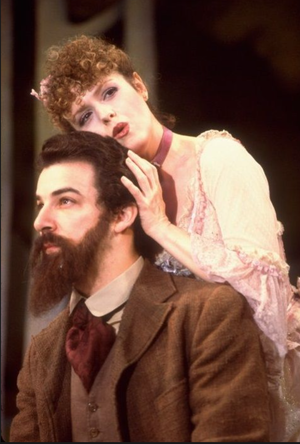
Mandy and Bernadette knew it in Sunday in the Park with George: you’ve got to Move On.
(In this case, move on means submit to the next person on your list, and don’t expect ever to hear back from the original publishing house. You don’t need to officially withdraw the manuscript. If by some miracle the first editor later says he or she is interested in your book, and you haven’t yet sold it, then great. But meanwhile you’ve taken your career into your own hands.)<img Mandy and Bernadette knew it in Sunday in the Park with George: you’ve got to Move On.”
Mandy and Bernadette knew it in Sunday in the Park with George: you’ve got to Move On.
#2. Regrettably, in this era, silence is the new no. Many literary agents have realized they don’t have the time to reply to every query they receive, so they’ve enacted a policy of “if you don’t hear from us in ___ weeks, assume we’ve passed.”
Here’s what to do when you’ve queried and agent and the allotted time to hear back has passed: MOVE ON.
Waiting for just the right literary agent or editor to say yes to you is like being in 7th grade and waiting for just the right boy, the one you know is perfect and you will spend the rest of your life with, to ask you out. You are much, much better off moving on to the guy standing right next to him in the lunch line.
This is also a good rule for a publishing house accepting unsolicited manuscripts, and for editors or publishers who are accepting submissions for a certain period after a conference. If you don’t hear back from them after 12-16 weeks, assume it’s a no and move on.
#3. You have signed with a literary agent, but they aren’t getting back to you. Maybe they don’t return your calls, maybe they don’t answer your emails. Everyone slips up now and again, of course, and that’s not what I’m talking about. Have you left a few messages in a row for your agent, either by email or phone, and not gotten a reply? Has that happened several times? End the relationship. The LAST thing you want is an agent who doesn’t return your calls or emails. The publishing process is frustratingly slow and thorny and fraught with all sorts of issues. Your agent is your champion; he or she goes into battle for you. You do not want to be in that battle not knowing when your weaponry is going to show up. Send an email and say you’re terminating the relationship. Do it now.
(And don’t be scared. Most agents are excellent. But I get asked about this every few months, so I’m including it.)
#4. An editor tells you he is taking your manuscript to an acquisitions meeting, then you don’t hear anything further. Follow up, by phone or email, remembering the rule, “always be polite and to the point.” Say “You said you were bringing my book to the committee, has there been a response?” I know, I know, who wants to send that email and hasten the chance of hearing “I’m afraid the committee passed?” But it’s better to hear “no” and move on. It’s also possible your editor needs to be prodded to get that book onto the meeting agenda. You just don’t know. You need to follow up.
Nota bene: ALWAYS be nice. Never lose your cool and yell at an editor, even by email, even when he deserves it. First, you never know the full story—I got screamed at, really screamed at, once when it was my boss causing the delay, but what could I do but take the heat? And second, venting is what you have friends for. The editor is disorganized, doesn’t value your time, has kept you hanging, repeatedly breaks her word about when she’s going to reply… all true. Still, be professional, courteous, and polite. For one thing, when a writer is nice and understanding, we, the editors, only feel more guilty and determined to treat you well and to finally get you an answer. Secondly, one day you may need that person you just reamed out. He may be sitting in the audience at sales conference, and be able to tell a rep “Oh, I know that author, so talented.” Or you may end up sitting next to that editor on a panel at a conference, who knows? Don’t burn bridges. Act professionally and then go out for drinks with your BFF and get it all off your chest.
 #5:
#5: Perhaps your book is under contract,
but your editor isn’t getting back to you with editorial notes, or with anything else. You want to revise, you have another book you need to work on, and you need to know what’s going on. But although you’ve emailed the editor three times to ask about the book’s schedule, you hear nothing. If you have an agent, easy, just tell the agent and he or she will deal with it. (Unless the agent doesn’t return your calls, in which case, see #2). But if you don’t have an agent, and you aren’t hearing back from your editor? Email their boss. Yup. Email the publisher, remembering to be professional and concise, saying “
I haven’t had an answer to my questions about the book’s schedule and I’m getting worried that my revision might conflict with another project; of course I understand how busy my editor is, but I wonder if you have information for me?” The publisher then forwards it to the editor who deals with it immediately.
Filed under:
Advice,
article,
Editors,
need to know,
reference,
submissions,
Tips Tagged:
5 Ways to Follow Up With An Editor or Agent,
Elizabeth Law 


By: Kathy Temean,
on 9/29/2014
Blog:
Writing and Illustrating
(
Login to Add to MyJacketFlap)
JacketFlap tags:
Sarah LaPolla,
Literary Fiction definition,
Bradford Literary,
Commercial Fiction definition,
Agent,
Advice,
article,
need to know,
demystify,
reference,
Add a tag
Don’t be afraid of the difference between literary and commercial fiction like these Scaredy Scouts illustrated by B.L. Bachmann below. B.L. is a writer and illustrator living in Los Angeles. Her mission is to make people smile, and even giggle :) See more at http://www.blbachmann.com
 I spent last week running two writer’s retreats in Avalon, NJ. The agents at the first retreat were Sarah LaPolla from Bradford Literary and Carly Watters from P.S. Literary. The agents at the second retreat were Ammi-Joan Paguette from Erin Murphy Agency and Heather Alexander from Pippin Properties.
I spent last week running two writer’s retreats in Avalon, NJ. The agents at the first retreat were Sarah LaPolla from Bradford Literary and Carly Watters from P.S. Literary. The agents at the second retreat were Ammi-Joan Paguette from Erin Murphy Agency and Heather Alexander from Pippin Properties.
It was a gorgeous week. Everyone received a full manuscript critique with an agent and a full manuscript critique from everyone in their group. I have to say, I think both of the sessions were the best retreats I have put together. The agents were top notched and each writer in each group took extreme care with their critiques, so we walked away with lots of ideas for revisions and with many doors open with the agents. On top of that, everyone meshed well and we had a tons of fun. Can’t think of anything that was missing.
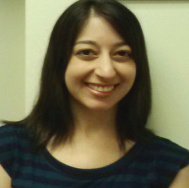 During the week the question came up about the difference between Literary Fiction and Commercial Fiction. Lucky for us, Sarah LaPolla had written an explanation on her blog and gave me permission to post it on Writing and Illustrating.
During the week the question came up about the difference between Literary Fiction and Commercial Fiction. Lucky for us, Sarah LaPolla had written an explanation on her blog and gave me permission to post it on Writing and Illustrating.
Here is Sarah:
I don’t think writers should get too hung up on labels, but it’s important to know what genre you’re writing. You’re expected to give an agent an immediate sense of where they can sell your book, but even more than that you should be able to know who you’ll be next to on a bookshelf so that you can read your comparison titles accordingly.
Figuring out thriller vs. mystery vs. suspense or paranormal romance vs. urban fantasy vs. supernatural horror can be difficult, I know. In these cases, it’s best to just choose the closest and let a professional decide the best way they can sell it. But the line between literary and commercial isn’t as vague. You shouldn’t claim your book is literary fiction if it isn’t. For one, it’s rare you’ll find an agent who looks for literary fiction and genre fiction with the same fervor, if they take on both at all. You don’t want to get a rejection based on a mislabel. Secondly, literary fiction is quite different than genre fiction, and not learning the difference can reflect a lack of research on your part.
The common argument, however, is that all books are technically literary. Right? Well, yes and no. Saying all books are literary is like saying all Young Adult novels are about characters under 25. The genre labels can be misleading, which is why it’s important to know what they mean.
If you’re unsure about which you’ve written, here’s a quick definition of each:
Literary fiction: The focus is on character arc, themes (often existential), and the use of language. I like to compare literary fiction authors to runway designers. The general public isn’t mean to wear the clothes models display on the runway. They exist to impress the other designers and show the fashion industry what they can do. Literary writing is a lot like that, but on a more accessible level. Many dismiss literary fiction as “too artsy” and “books without a plot,” but this isn’t true. At least not most of the time. The plot is there; it’s just incidental. Literary fiction is meant to make the reader reflect, and the author will almost always prefer a clever turn of phrase over plot development.
Commercial fiction: For the purposes of this blog post, I’ve been using this interchangeably with genre fiction. Basically, all genre fiction is commercial, but not all commercial fiction is genre. There is also “upmarket” commercial fiction, which I’ll get to later. Unlike literary fiction, genre fiction is written with a wide audience in mind (aka “commercial”) and always focuses on plot. There is still character development in genre fiction, but it is not as necessary. Characters get idiosyncratic quirks, clever dialogue, and often learn something new about life or themselves by the end. The difference is that their traits are only skin deep. The reader stays with them in the present. Rarely do we see a character’s past unless there is something pertinent to the plot back there. Genre fiction has a Point A and a Point B, and very little stands in the way of telling that story.
Keep in mind that an agent or editor will rarely prefer you to play with these formats, especially if you’re a debut author trying to find (and build) your audience. If you’re writing a plot-driven genre novel that adheres to a sci-fi, romance, or thriller structure, don’t try to load it with literary devices and huge character back-stories that aren’t relevant to the plot. It won’t impress an agent if you have a super literary genre novel. It will more likely confuse us and make your book harder to sell.
“Upmarket” fiction is where things get tricky. Books like The Help, Water for Elephants, Eat, Pray, Love, and authors like Nick Hornby, Ann Patchet, and Tom Perrotta are considered “upmarket.” Their concept and use of language appeal to a wider audience, but they have a slightly more sophisticated style than genre fiction and touch on themes and emotions that go deeper than the plot.
With debut authors, I think the main source of uncertainty tends to come from what they set out to write vs. what they actually write. Genre fiction is written with a clear purpose. The author has an idea and writes a story to accomplish their goal. Literary fiction can be more accidental. A writer may start with an idea, and then discover along the way that they don’t want to write about that anymore. They’ve fallen for their character’s personal tale or the images they want to evoke within the reader. If the writing ends up falling somewhere in the middle, then it might be considered “upmarket.” Or, it could mean it needs more focus one way or the other.
What’s important to remember is that none of these types of fiction is better than the other. It’s all about personal preference, based on what you like to read and how you write. If an agent doesn’t represent a certain genre, it doesn’t mean he or she think it’s bad. It just means you’re better off with someone else. Be aware that a genre label can influence an agent, but be honest about what your genre is. It wastes everyone’s time – most importantly, yours – if you try to guess what you think agents want. We want books we can fall in love with that fall under in genres and styles we represent, whether they’re young adult, adult genre fiction, or literary to a Proustian degree. That’s all.
You should drop by and take a look at Sarah’s blog: http://glasscasesblog.blogspot.com/ Sarah has agreed to be a Guest Blogger in the near future on a different subject, but another enjoyable post that will broaden your knowledge.
Thanks Sarah for sharing.
Talk tomorrow,
Kathy
Filed under:
Advice,
Agent,
article,
demystify,
need to know,
reference Tagged:
Bradford Literary,
Commercial Fiction definition,
Literary Fiction definition,
Sarah LaPolla 


By: Kathy Temean,
on 9/21/2014
Blog:
Writing and Illustrating
(
Login to Add to MyJacketFlap)
JacketFlap tags:
need to know,
Dow Phumiruk,
90 Things to answer about your characters before writing,
Character Checklist,
Character Questions,
Writing Tips,
reference,
Process,
revisions,
Add a tag
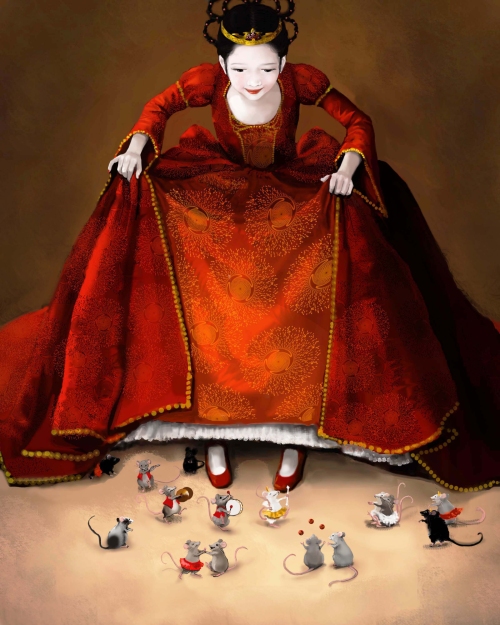
Here is a character illustrated by Dow Phumiruk. Just from the picture we can see she likes to dress nice, is probably a princess, most likely loves the color red, and likes to dance with mice. This is just the tip of the iceberg for this beautiful girl. Every agent and editor will tell you that it is a writers characters that make or break their story, so I made up a list of questions you can answer to help you get to know your character before you start writing. It can even help you with your next revision.
CHARCACTER CHECKLIST:
- How old is your character?
- What does your character look like?
- Are they tall, short, fat, shinny, big nose, big ears, long eyelashes, acne, etc.
- Is your character happy with the way they look?
- What kind of clothes do they like to wear?
- Does your character dream? What are they about?
- What are your character’s favorite food? Favorite junk food, Favorite ice cream flavor?
- What is their favorite color? Favorite flower? Favorite movie? Favorite game?
- Do the kids in school like him or her?
- Has that changed? Did the kids like them in a lower grade or vice versa?
- Are they interested in sports?
- Are they a natural athlete or someone who has to try hard to play a sport?
- What was their role in their family growing up?
- Do they love their parents, siblings, etc?
- Do they have a computer? What do they do on the computer? Are there any restrictions?
- Are they getting addicted to any technology?
- Do they have a cell phone? Any problems with how they use it?
- Do they talk on their cell phone when they should be sleeping? Do they text too much?
- Do they like to read?
- What type of books, magazines, etc. do they read?
- Do they play a musical instrument?
- What were they most proud of as a kid?
- What did they find terribly embarrassing as a kid?
- What still embarrasses them?
- Who is their best friend?
- Does your character have a best friend?
- Has that changed?
- What is their first best friend like?
- What do they like about their friend?
- Do they like to talk? Do they talk too much? Are they shy or a loner?
- Does your character cry alot? Gets mad easily? Laughs easily? Make jokes?
- What ‘group’ are they in during school?
- What do they want to be when they grew up–and how is that going?
- Have they ever been sick or in an accident?
- What music do they like? Do they hate the music that other people in their family like?
- What are their hobbies?
- Does your character collect anything?
- Do they play video games?
- Does your main character like getting dirty?
- Do they have good hygiene?
- Would you say your character is selfish?
- What annoys them?
- Are they a bully?
- What makes them laugh?
- Are they a dog, a cat, or an animal person?
- Does your character have a pet? Want a pet?
- What season do they enjoy most?
- Do they have a favorite holiday?
- Is your character religious? Does that play a role in their life?
- Is their family rich or poor?
- What type of house do they live in?
- Where do they live? City? Suburbs? Countryside?
- Has your character seen the ocean?
- Has your character traveled anywhere other than where they live? Would they like to travel?
- Does your character have money to spend?
- Do they care about money?
- Do they drink alcohol?
- Has anyone tried to get them to take drugs? Would they take drugs? Smoke?
- What is the worst thing your character has done?
- What do they feel most passionately about?
- What trait do they find most admirable in others?
- Do they want a job that helps people or a job that makes money?
- Are they a leader or a follower?
- What scares them?
- What are their long term goals?
- What are their short term goals?
- What are their bad habits?
- If they could have lived in another decade which would it have been?
- What do they do when they’re bored?
- What do they think happens after we die?
- If they were to come into money what would they do with it?
- Have they ever been in love?
- What happened to that person?
- Are they still interested in that person?
- Does the person know about that?
- What did the family think about this person?
- Who was or is the love of their life?
- Is your character afraid of anyone? Or anything?
- What is their biggest fear?
- Do they feel safe? Of not, who or what is causing that anxiety?
- Are they in a sexual relationship? Would they like to be?
- Do they look forward to growing up?
- What do they want the most?
- How close are they to getting what they want?
- What will happen if they don’t get what they want?
- Any negative forces around your character?
- Does your character have anyone to confide in?
- What is the best thing you character has ever done?
- Does your character get depressed? What depresses them?
- Does your character look at the world as being half full or half empty?
Thank you Dow for sending in the above illustration. Dow is an aspiring children’s book illustrator. She won the 2013 SCBWI On-the-Verge Emerging Voices Award that promotes diversity in children’s books. Please visit her newly organized portfolio site at http://www.artbydow.blogspot.com. She was also feature on Illustrator Saturday: https://kathytemean.wordpress.com/2013/01/19/illustrator-saturday-dow-phumiruk-md/
Talk tomorrow,
Kathy
Filed under:
need to know,
Process,
reference,
revisions,
Writing Tips Tagged:
90 Things to answer about your characters before writing,
Character Checklist,
Character Questions,
Dow Phumiruk 


By: Kathy Temean,
on 9/6/2014
Blog:
Writing and Illustrating
(
Login to Add to MyJacketFlap)
JacketFlap tags:
Princeton Adult School,
Writing Boooks for Children,
Author,
Self-publishing,
Process,
Publishing Industry,
opportunity,
How to,
children writing,
need to know,
Laurie Wallmark,
Add a tag

Do you have an idea for a children’s book? Would you like to share your story with children around the world? Well, Laurie Wallmark is teaching
WRITING BOOKS FOR CHILDREN at Princeton Adult School.
 Thurs 7:00-9:00pm
Thurs 7:00-9:00pm
October 2 – November 6
In this course you’ll explore: the many joys of writing for children; types of children’s books; elements of a great story; tips to make your writing sparkle; traditional vs. self-publishing; printed books and e-books; avoiding scams, and much more.
Here is the link to sign up.
Share it with your friends who may be starting out on their path to publishing.
Most of you already know Laurie, she was a wonderful Assistant Regional Advisor while I was Regional Advisor for the New Jersey SCBWI.
Here is a little bit about Laurie you might not know:
Laurie is pursuing an MFA in Writing for Children and Young Adults at Vermont College of Fine Arts. She has written numerous articles and stories in children’s magazines (Highlights, Spider, Cricket, and others). Her debut picture book, Ada, will be published by Creston Books in 2016.
Visit Laurie’s blog entitled “All News, No Schmooze: News and Notes for Busy Children’s Book Writers” at http://www.lauriewallmark.blogspot.com.
Talk tomorrow,
Kathy
Filed under:
Author,
children writing,
How to,
need to know,
opportunity,
Process,
Publishing Industry,
Self-publishing Tagged:
Laurie Wallmark,
Princeton Adult School,
Writing Boooks for Children 


By: Kathy Temean,
on 8/14/2014
Blog:
Writing and Illustrating
(
Login to Add to MyJacketFlap)
JacketFlap tags:
writing,
Victoria Strauss,
First Page Critique,
need to know,
Pippin Properties,
Free Fall Friday,
Agent Holly McGhee,
Agent Middleman Services,
Writer Alert,
Agent,
Add a tag
The SCBWI put out this alert with writers. Didn’t want you to miss it:
Agents have been writing to us about a new type of “scam” they are seeing: agent middleman services. These are companies that, for a fee, will query agents for you. Agents overwhelming ignore queries from these companies. If you are having trouble getting an agent to represent you, your best plan of attack is to work on your manuscript and research the field. Join a critique group, attend an SCBWI event and make sure you are querying the right agents by searching though the agent directory in The Book. Paying a third party to query for you is not a fast track, it is just a waste of your money. How Not to Seek a Literary Agent: The Perils of “Middleman” Services
Posted by Victoria Strauss for Writer Beware
I know I’ve written about this before. But I’m seeing an increasing number of these kinds of “services,” and they are all worthless.
What am I talking about? Agent middleman services–services that, for a fee, purport to contact agents on your behalf with the aim of snagging representation and, hopefully, a publishing contract.
A particularly egregious example: Bookmarq.net’s Finding a Publisher service. (All errors courtesy of the original.)
Worth reading the full article. Here’s the link:
http://www.victoriastrauss.com/2014/08/12/how-not-to-seek-a-literary-agent-the-perils-of-middleman-services/
_________________________________________________________________________
Agent Holly McGhee is our Guest Critiquer for August. Holly McGhee opened Pippin Properties in 1998, after being an executive editor at HarperCollins and has built one of the most prestigious Literary Agencies in the Children’s Book Industry.
Holly says, “At Pippin we embrace every artistic endeavor, from picture books to middle-grade novels, nonfiction, young adult, graphic novels. We don’t follow trends—we encourage our clients to follow their hearts. Our philosophy, the world owes you nothing, you owe the world your best work, hasn’t changed, but as an agency we have evolved to keep pace with our clients.”
Among Holly’s celebrated clients are Kate DiCamillo, David Small, Doreen Cronin, Jandy Nelson, Kathi Appelt, Harry Bliss, Peter H. Reynolds, Sujean Rim, Jon Agee, and Holly’s very own big sister, Alison McGhee. Holly lives with her husband and three children fifteen miles west of the Lincoln Tunnel, and she also writes under the pen name Hallie Durand.
Here are the submission guidelines for submitting a First Page in August:
Please “August First Page Critique” in the subject line. Please make sure you include your name, the title of the piece, and whether it is as picture book, middle grade, or young adult, etc. at the top.
Please attach your first page submission using one inch margins and 12 point font – double spaced, no more than 23 lines to an e-mail and send it to: kathy(dot)temean(at)gmail(dot)com. Also cut and paste it into the body of the e-mail and then also attach it in a Word document to the email.
DEADLINE: August 21st.
RESULTS: August 29th.
Use inch margins – double space your text – 12 pt. New Times Roman font – no more than 23 lines – paste into body of the email
You can only send in one first page each month. It can be the same first page each month or a different one, but if you sent it to me last month and it didn’t get chosen, you need to send it again using the August’s directions. Of course, it doesn’t have to be the same submission.
Talk tomorrow,
Kathy
Filed under:
Agent,
need to know,
writing Tagged:
Agent Holly McGhee,
Agent Middleman Services,
First Page Critique,
Free Fall Friday,
Pippin Properties,
Victoria Strauss,
Writer Alert 


By: Kathy Temean,
on 8/13/2014
Blog:
Writing and Illustrating
(
Login to Add to MyJacketFlap)
JacketFlap tags:
News,
Editors,
Publishing Industry,
Kudos,
need to know,
SCBWI Work-in-Progress Grant,
Jennifer Reinharz,
Writer's Digest Annual Contest,
Karen Fortunati,
The D-Day List,
The Pleasant Passover,
Add a tag
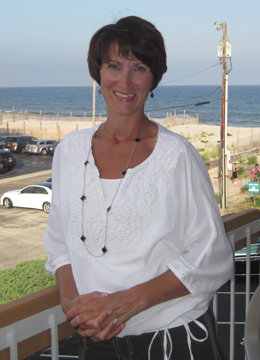 It seems like I’ve been hearing from a lot of readers of this blog with good news. Some I can report now, Like Jennifer Reinharz who sent me this news:
It seems like I’ve been hearing from a lot of readers of this blog with good news. Some I can report now, Like Jennifer Reinharz who sent me this news:
The 83rd Annual Writer’s Digest Writing Competition notified me last week that my blog post, “A Pleasant Passover” was awarded 5th place in the Inspirational Writing category.
She said, “If it wasn’t for your blog, I wouldn’t have entered the contest!”
You can read it on Jennifer’s blog: http://redsaidwhat.com/2014/05/01/128/
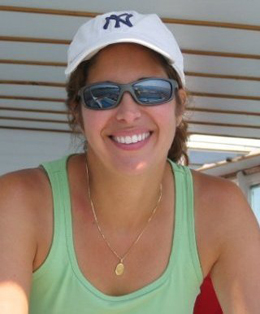 Then I heard from Karen Fortunati. She told me after seeing my post about the SCBWI Work-in-Progress Grant, she submitted her Contemporary YA novel, The D-Day List, and WON!
Then I heard from Karen Fortunati. She told me after seeing my post about the SCBWI Work-in-Progress Grant, she submitted her Contemporary YA novel, The D-Day List, and WON!
Here’s a blurb about her book:
For seventeen-year-old Catherine Pulaski, life is intolerable with bipolar disorder and depression. There’s only one way out but before she can kill herself, she’s got to accomplish the one item on her D-Day List. And if she does, it may change everything.
I have a feeling I missed someone, so if I missed you please email me again. Thanks!
Here are some other industry changes. Many of you know the lovely Allison Wortche and Katherine Harrison. I was so happy to hear their news.
At Knopf Children’s, Allison Wortche has been promoted to senior editor while Katherine Harrison moves up to associate editor.
Phaidon has hired Cecily Kaiser as publishing director, Children’s Books and Meagan Bennett as art director for the division, both reporting to Deb Aaronson out of the company’s New York offices.
Jonathan Jao will join Harper on September 8 as vp, executive editor, reporting to Jonathan Burnham. Previously he was a senior editor at Random House.
Lauren Scobell has joined Macmillan Children’s Publishing Group as director, Swoon Reads.
You should get out your Children’s Writer’s and Illustrator’s Market by Chuck Sambuchino and make the changes.
Talk tomorrow,
Kathy
Filed under:
Editors,
Kudos,
need to know,
News,
Publishing Industry Tagged:
Jennifer Reinharz,
Karen Fortunati,
SCBWI Work-in-Progress Grant,
The D-Day List,
The Pleasant Passover,
Writer's Digest Annual Contest 


By: Kathy Temean,
on 8/6/2014
Blog:
Writing and Illustrating
(
Login to Add to MyJacketFlap)
JacketFlap tags:
Tips,
reference,
Advice,
Amazon Reviews,
How to,
need to know,
Marketing a book,
Advanced Reader Copy,
Amazon Ebook Price Reduction,
Add a tag

- Give out a ARC to people who have a large following on their blogs, but ask them to commit to reading your book and doing a review. Need to work on this months before your book is released. Remember the more reviews you get the better your book will do, but they need to be good reviews.
- For the people who you gave an ARC to, ask them to pass on the book to another person to read to expand your audience.
- Ask everyone who does a review on Amazon to also put it up on Goodreads, too.
- If you have an ebook, consider having Amazon offer it on their Deal of the Day. Reducing the price for a few days or a week, will boost your sales and start word of mouth.
- Have family/friends/colleagues/fans buy your book during a ‘soft’ launch (pre-advertising, or promoting your book on social media).
- Price your book at 99 cents (the lowest allowed by Amazon) and drive as much traffic as you can during your ‘soft’ launch window. Once you have the bar filled you can re-price your book.
Talk tomorrow,
Kathy
Filed under:
Advice,
How to,
Marketing a book,
need to know,
reference,
Tips Tagged:
Advanced Reader Copy,
Amazon Ebook Price Reduction,
Amazon Reviews 


By: Kathy Temean,
on 8/3/2014
Blog:
Writing and Illustrating
(
Login to Add to MyJacketFlap)
JacketFlap tags:
Tips,
success,
Advice,
article,
How to,
Amazon Rankings,
need to know,
Marketing a book,
demystify,
How to Sell More Books,
Amazon Book Sales Strategies,
NJSCBWI 2014 Workshop,
Add a tag
This week we will look at a few strategies you can use to increase the sales of your books.

If you buy any books on Amazon, you may have noticed they list the Best Selling Books. You should give these categories some thought. It may help you get on one of their lists and getting on one of the lists will greatly improve your chances to get noticed and bought.
1. Try to choose a niche category on Amazon. There are less books, so you will have a better chance to be listed at the top.
2. By clicking the book ranked #100 in any given category, you can consult the Rank to Sales Estimator to see how many sales you need to qualify for that categories Best Seller List.
3. Self Published authors get to choose two categories.
Traditional publishers get to choose up to five categories. Make sure your publisher knows how the system works and how they can use it to their advantage. Choosing “Fiction” might not be the best category due to so many books. (over a million)
4. Example: Kindle Store> Kindle ebooks > Fiction> Mystery, Thriller & Suspense> Thrillers> Political. Your books will still show in all the categories above the one you chose.
A few scenarios:
Fault in Our Stars [Kindle Edition]
Amazon Best Sellers Rank: #6 Paid in Kindle Store (See Top 100 Paid in Kindle Store) This a list of all books (no categories)
#1 in Kindle Store > Kindle eBooks > Teen & Young Adult > Romance > Contemporary
#1 in Books > Teens > Love & Romance
Isla and the Happily Ever After [Kindle Edition]
Amazon Best Sellers Rank: #11,151 Paid in Kindle Store
#100 in Kindle Store > Kindle eBooks > Teen & Young Adult > Romance > Contemporary
The First Third [Kindle Edition]
Amazon Best Sellers Rank: #172,765 Paid in Kindle Store (See how this book was able to make the Top 100 List by picking Social Issues? That’s because there is less competition. This helps give the book a chance to be seen.)
#100 in Kindle Store > Kindle eBooks > Teen & Young Adult > Social Issues
The Year We Disappeared: A Father – Daughter Memoir [Kindle Edition]
Amazon Best Sellers Rank: #9,006 Paid in Kindle Store (See Top 100 Paid in Kindle Store)
#1 in Kindle Store > Kindle eBooks > Teen & Young Adult > Social Issues
#5 in Kindle Store > Kindle eBooks > Teen & Young Adult > Biography
#33 in Kindle Store > Kindle eBooks > Nonfiction > Children’s Nonfiction
Neverwhere [Kindle Edition]
Amazon Best Sellers Rank: #2,867 Paid in Kindle Store (See Top 100 Paid in Kindle Store)
#10 in Kindle Store > Kindle eBooks > Science Fiction & Fantasy > Fantasy > Classics
#11 in Kindle Store > Kindle eBooks > Literature & Fiction > Contemporary Fiction > Fantasy
#79 in Books > Literature & Fiction > Genre Fiction > Horror
5. Make sure you check to make sure the category you pick is on both the book side and the kindle side if you have a print book. Some of the categories do not match up.
6. If you are self-published you will need to do this for yourself, but don’t assume your publisher is choosing the best categories. Do your homework and discuss what you have found with them. But make sure you do this before they list it on Amazon.
Talk tomorrow,
Kathy
Filed under:
Advice,
article,
demystify,
How to,
Marketing a book,
need to know,
success,
Tips Tagged:
Amazon Book Sales Strategies,
Amazon Rankings,
How to Sell More Books,
NJSCBWI 2014 Workshop 


By: Kathy Temean,
on 7/29/2014
Blog:
Writing and Illustrating
(
Login to Add to MyJacketFlap)
JacketFlap tags:
list,
Book,
reference,
authors and illustrators,
Publishing Industry,
How to,
need to know,
demystify,
2014 NJSCBWI Conference,
Amazon Ranking vs. Daily Book Sales,
How to Sell More Books,
Add a tag
Thought you might be interested in the information I presented at the “How to Sell More Books” Workshop I gave at the NJSCBWI Conference in June. You might want to use it as a general rule of thumb when checking out your book (on other books) on Amazon.

Talk tomorrow,
Kathy
Filed under:
authors and illustrators,
Book,
demystify,
How to,
list,
need to know,
Publishing Industry,
reference Tagged:
2014 NJSCBWI Conference,
Amazon Ranking vs. Daily Book Sales,
How to Sell More Books 


By: Kathy Temean,
on 7/22/2014
Blog:
Writing and Illustrating
(
Login to Add to MyJacketFlap)
JacketFlap tags:
Call for Submissions,
Author,
Book,
Anthology,
opportunity,
Book Series,
need to know,
Places to sumit,
Get published opportunity,
Women in Nature,
Add a tag
Women in Nature: An Anthology, is the first book in the WIN-Women in Nature Series. The WIN series are collections of stories from women all across the North American continent… and beyond! These are true stories about the varied ways in which these women relate to ‘nature’ and our natural environment. Each book also contains complete chapters by prominent and passionate women, experienced in related aspects of ‘nature’. Subsequent WIN books will include: WIN on Dwelling; WIN on Indigenous Ways; WIN on Food, WIN on Adventure; WIN on Water; WIN on Healing; WIN on Children; and more!
OPEN FOR SUBMISSIONS!
We have received some amazing stories for our first WIN – Women in Nature book.
We are looking for good fun engaging stories! Inspiring, uplifting, adventurous, funny, stories … of your relationship with ‘nature’!
CALL FOR Your True Nature Stories!!!
SUBMISSION GUIDELINES:

From wilderness living to urban gardening, we want your personal stories that reflect a transforming or transcending connection to ‘nature’. We are looking for stories that can open our perspectives conceptually, or ‘show us how’ to do something experientially. We’re talking about living with the earth, not on her. How do women connect with nature, and the reciprocal and essential relationship with the earth and all that is in it?
Guidelines:
- Your story must be true.
- Your story should be told in first person
- Good quality writing is as essential to your story, as is your story.
- Your story should relate to a personal experience that then translates into insight, advice, creative ideas, or transcending awareness!
- Your (funny, somber, endearing, emotional or otherwise) story should be between 750 – 2000 words
- If your story is chosen, you will be given author exposure, as well as varied options for compensation including copies of the book, discounts, (and other monetary and non-monetary rewards to be further specified.)
- We are currently accepting stories from women (as this is a women’s anthology) from ages 18 and on…. however, we are open to stories from men… about women.
Submissions should include: Your story and a brief (50 word) author bio..
SUBMIT TO SPECIFIC WIN BOOKS AS FOLLOWS:
SUBMIT TO SPECIFIC WIN BOOKS AS FOLLOWSFOOD
The objective of the WIN – Women in Nature on Food book, is to generate an awareness of the food we eat, where it comes from, and how what we eat affects all life on this planet.
We are looking for your true stories about food, particularly stories that celebrate sustainable and organic food and food sources as they relate to our natural environment. We also welcome stories that reflect the emotional relationship humans have with food, as well as stories that encourage an awareness of connection.
SUBMIT YOUR STORIES ON FOOD TO [email protected] DEADLINE foe submissions 1 September 2014
ADVENTURE
The objective of the WIN – Women in Nature on Adventure book is to encourage awareness, respect and intimacy as we seek out adventure. We are looking for your true stories about your adventures in, and more significantly ‘with’, nature. Adventures – hiking, climbing, deep sea diving, dog sledding, kayaking, spelunking, wilderness research, horseback riding, swimming, mountaineering, skiing, surfing – can unfortunately sometimes become an activity of disregard and disrespect. We are looking for experiences that celebrate and appreciate the beauty and awe of the natural environment – and instill an intimacy and awareness of reciprocity – while experiencing all of the challenges, adventures, and inspiration nature has to offer!
SUBMIT YOUR STORIES ON ADVENTURE TO [email protected] DEADLINE foe submissions 1 September 2014
CHILDREN
The objective of the WIN – Women in Nature on Children book is to encourage the engagement of children with the natural environment, and to nurture an understanding of their existential and intimate relationship with all living things. We are looking for your true stories about children and their relationship with nature. We welcome stories about your childhood experiences in nature, as well as stories about getting children into nature, and your experiences observing children in nature. All stories should move beyond children merely playing an activity outdoors and should focus on the interaction with nature.
SUBMIT YOUR STORIES ON CHILDREN TO [email protected] DEADLINE for submissions 1 September 2014
HEALING
The objective of the WIN – Women in Nature on Healing book is to encourage an understanding of our reciprocal relationship with the nature, and how the health of the earth and our own health are intimately intertwined. We are looking for your true stories about healing, both the healing of nature and how nature heals us. This includes both physical and emotional healing through anything from plants and animals, to the healing power of simply being in nature’s bliss.
SUBMIT YOUR STORIES ON HEALING TO [email protected] DEADLINE foe submissions 1 October 2014
GENERAL – For stories that do not fit into any of the above categories, please submit through our standard contact form below.
And, watch for more WIN titles and varying submission deadlines.
IDEAS… to get you started
We are looking for any personal story that connects you to ‘nature’.organic or urban gardening FOOD
foraging for wild edibles FOOD
camping under the stars ADVENTURE
live trapping bugs and setting them free outside
kayaking and white water rafting ADVENTURE
rock climbing and mountaineering ADVENTURE
nurturing a wounded critter HEALING
painting your house with natural pigments DWELLING
natural everday living stuff CHILDREN
hiking and backpacking ADVENTURE
mushrooming FOOD
natural horseback riding ADVENTURE
collecting rainwater FOOD
composting DWELLING/HEALING/FOOD
passive solar heating DWELLING/ENERGY
getting fire from friction DWELLING/ENERGY
building a natural shelter DWELLING
cooking on an open fire FOOD
hunting and fishing FOOD/CHILDREN
creating an outdoor labyrinth HEALING
braintanning hides DWELLING
working with animals ANIMALS/HEALING
water – rivers, snow, streams, oceans WATER/HEALING
shearing and spinning wool ANIMALS/DWELLING
teaching children about nature CHILDREN
research field work ADVENTURE/HEALING
building a sweatliodge HEALING
sleeping outside on your back deck CHILDREN
etc…. etc
A story about anything that connects you
to the earth!
Talk tomorrow, |
Kathy
Filed under:
Author,
Book,
need to know,
opportunity,
Places to sumit Tagged:
Anthology,
Book Series,
Call for Submissions,
Get published opportunity,
Women in Nature 


By: AlyssaB,
on 7/18/2014
Blog:
OUPblog
(
Login to Add to MyJacketFlap)
JacketFlap tags:
christianity,
disciple,
trusting,
apostle,
epistemology,
shalom,
Christian Epistemology,
John G. Stackhouse Jr.,
Vocation as the Heart of Christian Epistemology,
stackhouse,
thomas reid,
god—trusting,
infallible,
Books,
Religion,
Humanities,
Need to Know,
*Featured,
scottish enlightenment,
john stackhouse,
Add a tag
This is the final in a four-part series on Christian epistemology titled “Radical faith meets radical doubt: a Christian epistemology for skeptics” by John G. Stackhouse, Jr.
By John G. Stackhouse, Jr.
Do Christians need the kind of radical faith that Thomas Reid, in the Scottish Enlightenment, and Alvin Plantinga, in our own time, offer as the best response to the pervasive skepticism of modernity?
Christians traditionally aver that the Bible gives us infallible truth. But wise Christians also acknowledge that God never promises infallible interpretation to any Christian or group of Christians. The Bible is the Word of God, but any interpretation we render is, unavoidably, an interpretation we render. As such, it is limited by our limitations and flawed by our flaws.
What about the Holy Spirit, then? Doesn’t the very presence of God guarantee truth to the believer? Again, the indwelling of every believer by the Holy Spirit is a precious truth, and the assurance God gives us of his love and care and, yes, guidance thereby is a treasure indeed. But the gift of the Holy Spirit has never entailed that every Christian will score 100% on every math test—or on/in any other test in life, either. Wherever we go—even with the Spirit of God—there we inevitably are.
The Apostle Paul comes to our aid at this point and reminds us that we walk by faith, not by sight (II Cor. 5:7), perhaps more profoundly than we knew. We walk, trusting our senses, trusting our memories, trusting our worldviews, and—in the face of all this doubt about all these good, but fallible, gifts of God—trusting God.
The fundamental truth here is that God called humanity to “fill the earth and subdue it, to have dominion” (Gen. 1:28) and to thereby work with him to make the world all it can be. It follows from the fact of this basic commandment that human beings can trust God to give us at least enough knowledge of the world to care for it properly, even as we try faithfully to keep learning more about it so we can care for it better.
Similarly, God called the Christian Church to “make disciples of all nations” (Matt. 28:19), and to thereby work with God to help humanity become all we can be. It likewise follows that we Christians can trust God to give us at least enough knowledge of ourselves and our fellow human beings to disciple each other properly, even as we try faithfully to learn more about ourselves and God so we can disciple each other better.
More particularly, God calls particular groups of people and particular individuals to particular ways of making shalom and making disciples. Modern societies feature such diverse elements as the various parts and forms of the state, the family, businesses, schools, health care facilities, churches, missionary agencies, mass entertainment and news media, and so on. These various instances of shalom-making and disciple-making have particular ways of knowing, and particular bodies of knowledge, that are best suited to the fulfillment of their mission. Again, then, God can be trusted to provide these institutions and individuals distinctively what they need, including what they need epistemically, to fulfill their callings.
So we can and should rejoice in the gracious providence of God, who always supplies our needs in order for us to fulfill God’s call upon our lives. God gives us, as we pray, “our daily bread”—in metaphorical terms of knowledge as well as in literal terms of nourishment.
At the same time, the Bible’s depiction of human limitations squares nicely with the history of skeptical philosophy, and prompts us to be humble enough to realize how little we know, how little we know about the accuracy and completeness of what we think we know, and how much we have to trust God to guide, correct, and increase what we know according to God’s good purposes.
Do we know enough to get to work and make shalom? Yes, we do.
Do we know enough to bear witness to the gospel and make disciples? Yes, we do.
Do we need to claim certainty in order to fulfill the mission of God in these days? No, we don’t.
Certainty isn’t on offer. But confidence—con fide (with faith)—is.
That should be enough for the Christian to get through today with joy and effectiveness. And that’s all that matters (Matt. 6:34).
John G. Stackhouse Jr. is the Sangwoo Youtong Chee Professor of Theology and Culture at Regent College, Vancouver, Canada. He is the author of Need to Know: Vocation as the Heart of Christian Epistemology.
Subscribe to the OUPblog via email or RSS.
Subscribe to only religion articles on the OUPblog via email or RSS.
The post Radical faith answers radical doubt appeared first on OUPblog.


By: AlyssaB,
on 7/17/2014
Blog:
OUPblog
(
Login to Add to MyJacketFlap)
JacketFlap tags:
christianity,
reid,
Need to Know,
epistemology,
John G. Stackhouse Jr.,
john stackhouse,
Vocation as the Heart of Christian Epistemology,
stackhouse,
peak skepticism,
thomas reid,
hume—reid,
Religion,
Philosophy,
Humanities,
*Featured,
Christian Epistemology,
Books,
Add a tag
This is the third in a four-part series on Christian epistemology titled “Radical faith meets radical doubt: a Christian epistemology for skeptics” by John G. Stackhouse, Jr.
By John G. Stackhouse, Jr.
We are near, it seems, “peak skepticism.” We all know that the sweetest character in the movie we’re watching will turn out to be the serial killer. We all know that the stranger in the good suit and the great hair is up to something sinister. We all know that the honey-voiced therapist or the soothing guru or the brave leader of the heroic little NGO will turn out to be a fraud, embezzling here or seducing there.
“I read it on the Internet” became a rueful joke as quickly as there was an Internet. Politicians are all liars, priests are all pedophiles, professors are all blowhards: you can’t trust anyone or anything.
Notre Dame philosopher Alvin Plantinga shrugs off the contemporary storm of frightening doubt, however, with the robust common sense of his Frisian forebears:
Such Christian thinkers as Pascal, Kierkegaard, and Kuyper…recognize that there aren’t any certain foundations of the sort Descartes sought—or, if there are, they are exceedingly slim, and there is no way to transfer their certainty to our important non-foundational beliefs about material objects, the past, other persons, and the like. This is a stance that requires a certain epistemic hardihood: there is, indeed, such a thing as truth; the stakes are, indeed, very high (it matters greatly whether you believe the truth); but there is no way to be sure that you have the truth; there is no sure and certain method of attaining truth by starting from beliefs about which you can’t be mistaken and moving infallibly to the rest of your beliefs. Furthermore, many others reject what seems to you to be most important. This is life under uncertainty, life under epistemic risk and fallibility. I believe a thousand things, and many of them are things others—others of great acuity and seriousness—do not believe. Indeed, many of the beliefs that mean the most to me are of that sort. I realize I can be seriously, dreadfully, fatally wrong, and wrong about what it is enormously important to be right. That is simply the human condition: my response must be finally, “Here I stand; this is the way the world looks to me.”
In this attitude Plantinga follows in the cheerful train of Thomas Reid, the great Scottish Enlightenment philosopher. In his several epistemological books, Reid devotes a great deal of energy to demolishing what he sees to be a misguided approach to knowledge, which he terms the “Way of Ideas.” Unfortunately for standard-brand modern philosophy, and even for most of the rest of us non-philosophers, the Way of Ideas is not merely some odd little branch but the main trunk of epistemology from Descartes and Locke forward to Kant.
The Way of Ideas, roughly speaking, is the basic scheme of perception by which the things “out there” somehow cause us to have ideas of them in our minds, and thus we form appropriate beliefs about them. Reid contends, startlingly, that this scheme fails to illuminate what is actually happening. In fact, Reid pulverizes this scheme as simply incoherent—an understanding so basic that most of us take it for granted, even if we could not actually explain it. The “problem of the external world” remains intractable. We just don’t know how we reliably get “in here” (in our minds) what is “out there” (in the world).
Having set aside the Way of Ideas, Reid then stuns the reader again with this declaration: “I do not attempt to substitute any other theory in [its] place.” Reid asserts instead that it is a “mystery” how we form beliefs about the world that actually do seem to correspond to the world as it is. (Our beliefs do seem to have the virtue of helping us negotiate that world pretty well.)
The philosopher who has followed Reid to this point now might well be aghast. “What?” she might sputter. “You have destroyed the main scheme of modern Western epistemology only to say that you don’t have anything better to offer in its place? What kind of philosopher are you?”
“A Christian one,” Reid might reply. For Reid takes great comfort in trusting God for creating the world such that human beings seem eminently well equipped to apprehend and live in it. Reid encourages readers therefore to thank God for this provision, this “bounty of heaven,” and to obey God in confidence that God continues to provide the means (including the epistemic means) to do so. Furthermore, Reid affirms, any other position than grateful acceptance of the fact that we believe the way we do just because that is the way we are is not just intellectually untenable, but (almost biblically) foolish.
Thus Thomas Reid dispenses with modern hubris on the one side and postmodern despair on the other. To those who would say, “I am certain I now sit upon this chair,” Reid would reply, “Good luck proving that.” To those who would say, “You just think you’re sitting in a chair now, but in fact you could be anyone, anywhere, just imagining you are you sitting in a chair,” he would simply snort and perhaps chastise them for their ingratitude for the knowledge they have gained so effortlessly by the grace of God.
Having acknowledged the foolishness of claiming certainty, Reid places the burden of proof, then, where it belongs: on the radical skeptic who has to show why we should doubt what seems so immediately evident, rather than on the believer who has to show why one ought to believe what seems effortless to believe. Darkness, Reid writes, is heavy upon all epistemological investigations. We know through our own action that we are efficient causes of things; we know God is, too. More than this, however, we cannot say, since we cannot peer into the essences of things. Reid commends to us all sorts of inquiries, including scientific ones, but we will always be stymied at some level by the four-year-old’s incessant question: “Yes, but why?” Such explanations always come back to questions of efficient causation, and human reason simply cannot lay bare the way things are in themselves so as to see how things do cause each other to be this or that way.
Reid’s contemporary and countryman David Hume therefore was right on this score, Reid allows. But unlike Hume—very much unlike Hume—Reid is cheerful about us carrying on anyway with the practically reliable beliefs we generally do form, as God wants us to do. Far from being paralyzed by epistemological doubt, therefore, Reid offers all of us a thankful epistemology of trust and obedience.
But do Christians need to resort to such a breathtakingly bold response to the deep skepticism of our times? My last post offers an answer.
John G. Stackhouse Jr. is the Sangwoo Youtong Chee Professor of Theology and Culture at Regent College, Vancouver, Canada. He is the author of Need to Know: Vocation as the Heart of Christian Epistemology.
Subscribe to the OUPblog via email or RSS.
Subscribe to only religion articles on the OUPblog via email or RSS.
The post Approaching peak skepticism appeared first on OUPblog.


By: AlyssaB,
on 7/16/2014
Blog:
OUPblog
(
Login to Add to MyJacketFlap)
JacketFlap tags:
Religion,
authority,
Memory,
christianity,
Humanities,
Need to Know,
*Featured,
epistemology,
certainty,
Christian Epistemology,
John G. Stackhouse Jr.,
john stackhouse,
Vocation as the Heart of Christian Epistemology,
exaggeration,
expert knowledge,
ioannidis,
stackhouse,
Books,
Add a tag
This is the second in a four-part series on Christian epistemology titled “Radical faith meets radical doubt: a Christian epistemology for skeptics” by John G. Stackhouse, Jr.
By John G. Stackhouse, Jr.
We might have reason to doubt some or even much of our day-to-day apprehension of things. We’re all in a hurry, all having to learn and discern and decide on the fly. Surely in the realm of medical research, however, the most important research we conduct, expert knowledge is sure and sound? David H. Freedman, in his disturbing book Wrong, introduces us to Dr. John Ioannidis. You’ll never sleep well again.
 Ioannidis, an expert in expert medical studies, has impressive credentials. Graduating first in his class from the University of Athens Medical School, he completed a residency at Harvard in internal medicine and then took up a research and clinical appointment at Tufts in infectious diseases. While at Tufts, however, he began to notice that a wide range of medical treatment did not rest on solid scientific evidence. While next at the National Institutes of Health and Johns Hopkins University in the 1990s, Ioannidis stated that two-thirds of hundreds of medical studies he read in the scholarly literature were either fully refuted or pronounced “exaggerated” within a few years of their publication.
Ioannidis, an expert in expert medical studies, has impressive credentials. Graduating first in his class from the University of Athens Medical School, he completed a residency at Harvard in internal medicine and then took up a research and clinical appointment at Tufts in infectious diseases. While at Tufts, however, he began to notice that a wide range of medical treatment did not rest on solid scientific evidence. While next at the National Institutes of Health and Johns Hopkins University in the 1990s, Ioannidis stated that two-thirds of hundreds of medical studies he read in the scholarly literature were either fully refuted or pronounced “exaggerated” within a few years of their publication.
This seems troubling. Be more troubled, however, as Freedman continues:
[Ioannidis] had been examining only the less than one-tenth of one percent of published medical research that makes it [in]to the most prestigious medical journals.… Ioannidis did find one group of studies that more often than not remained unrefuted: randomized controlled studies… that appeared in top journals and that were cited in other researchers’ papers an extraordinary one thousand times or more. Such studies are extremely rare and represent the absolute tip of the tip of the pyramid of medical research. Yet one-fourth of even these studies were later refuted, and that rate might have been much higher were it not for the fact that no one had ever tried to confirm or refute nearly half of the rest.
To confirm your permanent insomnia, journalist Julian Sher examines the world of forensic science and finds many instances of wrongful convictions. He points to a 2009 study published in the Virginia Law Review that surveyed the cases of 137 convicted persons later exonerated by DNA evidence, and found that in more than half of the trials forensic experts gave invalid testimony, “including errors about shoe prints and hair samples.” That same year, the National Academy of Sciences published a book-length report warning that even fingerprint matches can be misleading and calling for a drastically improved approach to forensic science. So much, then, for people’s fates being determined by the clear, cold, infallible judgment of the scientific expert witness. (So much, also, for the entire CSI franchise…)
As the world begins to shimmer ever more before our eyes and the solid ground beneath our feet threatens to evanesce, along comes historian Alison Winter to offer an entire book about the questionable reliability of Memory. What we do not readily comprehend, what does not fit within our set of presuppositions, does not tend to register with us immediately and clearly, if at all, and therefore also not in our memory. Conversely, what we expect to experience, or afterward believe we must have experienced, gets written into our memories despite what may have actually happened.
Contrary, that is, to the popular notion that somewhere buried in our brains is a perfect recording of everything we have ever experienced, Winter shows through her study of the last century of memory research that our minds instead are constantly coding what we experience as “memorable,” “sort of memorable,” “not memorable” and the like, according to our understanding of the world and according to our valuing of this or that element of the world.
Furthermore, our memories are plastic, and remain vulnerable to addition, subtraction, deformation, reformation, confabulation, and other processes as our lives progress and as our beliefs change, rather than being fixed, veracious “imprints” of the external world upon our minds.
What, then, can we possibly trust in our quest for knowledge? If we cannot trust our own senses, reason, memory—or even those of the most expert experts in our society—are we simply lost in the blooming, buzzing confusion of an incomprehensible world?
In a word, yes. Yes, we are.
John G. Stackhouse Jr. is the Sangwoo Youtong Chee Professor of Theology and Culture at Regent College, Vancouver, Canada. He is the author of Need to Know: Vocation as the Heart of Christian Epistemology.
Subscribe to the OUPblog via email or RSS.
Subscribe to only religion articles on the OUPblog via email or RSS.
Image credit: Laboratory technicians at work in medical plant with machinery and computers. © diego_cervo via iStockphoto.
The post Certainty and authority appeared first on OUPblog.


By: Kathy Temean,
on 7/15/2014
Blog:
Writing and Illustrating
(
Login to Add to MyJacketFlap)
JacketFlap tags:
Young Adult Novel,
illustrating,
Publishing Industry,
need to know,
2014 NJSCBWI Conference,
2014 State of the Market Report,
Kathy Temean's State of the Market,
Angie Kidd Shinozaki,
Ebook Sales and Growth,
Who'es Reading YA?,
Add a tag

By: AlyssaB,
on 7/15/2014
Blog:
OUPblog
(
Login to Add to MyJacketFlap)
JacketFlap tags:
Books,
Religion,
christianity,
Humanities,
Need to Know,
*Featured,
epistemology,
Christian Epistemology,
John G. Stackhouse Jr.,
john stackhouse,
Vocation as the Heart of Christian Epistemology,
Add a tag
This is the first in a four-part series on Christian epistemology titled “Radical faith meets radical doubt: a Christian epistemology for skeptics” by John G. Stackhouse, Jr.
By John G. Stackhouse, Jr.
Right now I’m bored. I can’t be wrong about that. I truly am yawningly, dazedly bored. Epistemologists assure me that about my mental states, such as this present one of stupefaction, I can claim certainty. More sharply, if I am feeling pain, then I am certainly feeling pain. It might be triggered by an injury, or the phenomenon of “phantom pain” after an amputation, or the probe of a neurosurgeon in my brain, but whatever the cause, “I am feeling pain” is a statement I can make with absolute certainty.
Alas, there are precious few such statements one can make. In this so-called Information Age, in which we have more access to more data than ever before, we also live in the age of Photoshop, scams, phishing, and the lot; in a post-Sixties cloud of unknowing in which we doubt the claims of any purported authority. Surrounded by a world of knowledge, we feel less and less able to trust any of it.
Radical doubt is hardly a new problem, of course. The ancient Chinese sage Zhuang-zi wondered if he was a man dreaming he was a butterfly, or possibly instead a butterfly dreaming he was a man. The Wachowski brothers (as they were at the time) brought us The Matrix, merely the most popular of cinematic head trips making us doubt the reality of our quotidian percepts—from Total Recall to Inception to, well, the remake of Total Recall.

Still from The Matrix, courtesy of Warner Bros. Entertainment.
In between, however, we had the robust confidence of the early Enlightenment and the Scientific Revolution. Here, at least, was a time when philosophers and scientists had the world by the tail and could confidently pronounce upon it.
Take John Locke, for example. Here, at least, we have someone who knows what he knows and sets the empiricist tradition of the Enlightenment firmly on its way to greater and greater knowledge of the world.
Except Locke, despite the textbooks, didn’t think that way about thinking. After two centuries of religious and political upheaval in Britain, in the late 1600s John Locke thought it was time to settle everyone down. The great political philosopher was also an epistemologist and epistemology came readily to the aid of his politics.
Instead of prosecuting politics with a fanatical certainty that could tolerate no alternatives, he advised his reader: bethink yourself as to just how certain you can claim to be. You will find that you are not nearly so entitled to certainty as you thought you were. In fact, legitimate certainty is rare and restricted to only one zone: one’s own mental states. You cannot be less than certain, since you cannot possibly be wrong, about what you are experiencing, whether joy or pain. (Sound familiar?) The common epistemic situation instead is to be more or less convinced by more or less convincing evidences and inferences.
The common practice to that point, to be sure, was to simply believe or not believe. Locke’s predecessors and contemporaries, he contended, had foolishly taken onboard all sorts of dubious and even pernicious ideas without submitting them to the scrutiny of critical reason. Worse, they then had elevated various versions of this mish-mash to the level of dogma, and proceeded to fight religious wars over them. In short, people had not governed their beliefs properly heretofore.
The proper attitude instead, Locke averred, is to proportion one’s assent in any given case to the strength of the evidences as adjudicated by Reason. One thus is in an epistemological position to grant that other people’s views may have at least some grounding. One might even learn something from particularly impressive alternatives. An attitude of tolerance for alternatives is thus in order, fanaticism should disappear, and political, ideological, and even religious pluralism can flourish.
Across the Channel, scientist and theologian Blaise Pascal likewise anticipated our postmodern doubts as he warned:
Man is nothing but a subject full of natural error that cannot be eradicated except through grace. Nothing shows him the truth, everything deceives him. The two principles of truth, reason and senses, are not only both not genuine, but are engaged in mutual deception. The senses deceive reason through false appearances, and, just as they trick the soul, they are tricked by it in their turn: it takes its revenge. The senses are disturbed by passions, which produce false impressions. They both compete in lies and deception.
Surely, though, we have come a long way since the seventeenth century? Surely we can have much firmer footing for our beliefs today, The Matrix notwithstanding?
One main reason for our lack of certainty is that our brains still process the world the way our ancestors did. It’s not a bad way to process the world. Quite the contrary, in fact: it is generally efficient and reliable. But it is a long way from providing us certainty about much of anything.
Nobel Prize-winning psychologist Daniel Kahneman sums up much of his career in his popular book Thinking, Fast and Slow. He suggests that we typically respond to the world in something very like a reflexive mode: apprehending, comprehending, and responding to what we encounter with as little intellectual effort as possible. We therefore “process” the world along well-worn intellectual pathways, habits of apprehension, comprehension, and response (Kahneman uses the term “heuristics”) that have served us well in the past and require little effort to traverse again.
Our natural resort to such habits, of course, helps us avoid traffic dangers smoothly, return a tennis serve accurately, and greet a stranger at a party politely. But our reliance on what Kahneman calls System 1 thinking means that we often miss opportunities to apprehend, comprehend, or respond to reality as well as we might—or ought. For on the dark side of System 1 thinking is convention, bias, even prejudice, the very opposites of insightful, creative, and independent thinking.
Indeed, System 1 thinking is “a machine for jumping to conclusions,” Kahneman says. It is an awfully useful machine—indeed, we could not survive, let alone thrive, without it. But its very speed, general reliability, and relative ease-of-use means that we tend always to resort to it unless we feel we simply have to slow down and think about things in a concentrated way. Then we employ System 2, the mode of complex calculations, critical re-examination of information, and the posing of creative alternatives. Even then, however, we use System 2 only as much and for as long as we feel we need to do so. We are, Kahneman concludes, basically lazy thinkers.
Stanford business professor Chip Heath and his Aspen Institute-consultant brother Dan confirm from abundant research that the ideas that make the most immediate and lasting impact on people generally have qualities that have nothing to do with their veracity: simplicity, unexpectedness, concreteness, a measure of credibility, emotional impact, and a vivid exemplifying narrative (Made to Stick). Thus contrary ideas that are more complex, banal, abstract, equally credible, dull, and bereft of a fascinating story cannot compete—even if they have the single quality that matters: truth.
One might assume that those we trust as authorities can rise above the habits of the mass. Journalist David H. Freedman will keep you awake at night, however, by his account (with the wonderful title, Wrong) of just how frequently experts have been wrong nonetheless.
That upsetting news is in my next post.
John G. Stackhouse Jr. is the Sangwoo Youtong Chee Professor of Theology and Culture at Regent College, Vancouver, Canada. He is the author of Need to Know: Vocation as the Heart of Christian Epistemology.
Subscribe to the OUPblog via email or RSS.
Subscribe to only religion articles on the OUPblog via email or RSS.
The post The butterfly and the matrix appeared first on OUPblog.

View Next 25 Posts






 Rachel Marks, Agent
Rachel Marks, Agent
 Amazon’s real-time experiment with the livelihoods they have provided to their exclusive self-published KDP authors through Kindle Unlimited (KU) continues to draw concern on online forums. The most recent scrutiny stems from a
Amazon’s real-time experiment with the livelihoods they have provided to their exclusive self-published KDP authors through Kindle Unlimited (KU) continues to draw concern on online forums. The most recent scrutiny stems from a 







 #5: Perhaps your book is under contract, but your editor isn’t getting back to you with editorial notes, or with anything else. You want to revise, you have another book you need to work on, and you need to know what’s going on. But although you’ve emailed the editor three times to ask about the book’s schedule, you hear nothing. If you have an agent, easy, just tell the agent and he or she will deal with it. (Unless the agent doesn’t return your calls, in which case, see #2). But if you don’t have an agent, and you aren’t hearing back from your editor? Email their boss. Yup. Email the publisher, remembering to be professional and concise, saying “I haven’t had an answer to my questions about the book’s schedule and I’m getting worried that my revision might conflict with another project; of course I understand how busy my editor is, but I wonder if you have information for me?” The publisher then forwards it to the editor who deals with it immediately.
#5: Perhaps your book is under contract, but your editor isn’t getting back to you with editorial notes, or with anything else. You want to revise, you have another book you need to work on, and you need to know what’s going on. But although you’ve emailed the editor three times to ask about the book’s schedule, you hear nothing. If you have an agent, easy, just tell the agent and he or she will deal with it. (Unless the agent doesn’t return your calls, in which case, see #2). But if you don’t have an agent, and you aren’t hearing back from your editor? Email their boss. Yup. Email the publisher, remembering to be professional and concise, saying “I haven’t had an answer to my questions about the book’s schedule and I’m getting worried that my revision might conflict with another project; of course I understand how busy my editor is, but I wonder if you have information for me?” The publisher then forwards it to the editor who deals with it immediately. I spent last week running two writer’s retreats in Avalon, NJ. The agents at the first retreat were Sarah LaPolla from Bradford Literary and Carly Watters from P.S. Literary. The agents at the second retreat were Ammi-Joan Paguette from Erin Murphy Agency and Heather Alexander from Pippin Properties.
I spent last week running two writer’s retreats in Avalon, NJ. The agents at the first retreat were Sarah LaPolla from Bradford Literary and Carly Watters from P.S. Literary. The agents at the second retreat were Ammi-Joan Paguette from Erin Murphy Agency and Heather Alexander from Pippin Properties.  During the week the question came up about the difference between Literary Fiction and Commercial Fiction. Lucky for us, Sarah LaPolla had written an explanation on her blog and gave me permission to post it on Writing and Illustrating.
During the week the question came up about the difference between Literary Fiction and Commercial Fiction. Lucky for us, Sarah LaPolla had written an explanation on her blog and gave me permission to post it on Writing and Illustrating.

 Thurs 7:00-9:00pm
Thurs 7:00-9:00pm It seems like I’ve been hearing from a lot of readers of this blog with good news. Some I can report now, Like Jennifer Reinharz who sent me this news:
It seems like I’ve been hearing from a lot of readers of this blog with good news. Some I can report now, Like Jennifer Reinharz who sent me this news: Then I heard from Karen Fortunati. She told me after seeing my post about the SCBWI Work-in-Progress Grant, she submitted her Contemporary YA novel, The D-Day List, and WON!
Then I heard from Karen Fortunati. She told me after seeing my post about the SCBWI Work-in-Progress Grant, she submitted her Contemporary YA novel, The D-Day List, and WON! 





 Ioannidis, an expert in expert medical studies, has impressive credentials. Graduating first in his class from the University of Athens Medical School, he completed a residency at Harvard in internal medicine and then took up a research and clinical appointment at Tufts in infectious diseases. While at Tufts, however, he began to notice that a wide range of medical treatment did not rest on solid scientific evidence. While next at the National Institutes of Health and Johns Hopkins University in the 1990s, Ioannidis stated that two-thirds of hundreds of medical studies he read in the scholarly literature were either fully refuted or pronounced “exaggerated” within a few years of their publication.
Ioannidis, an expert in expert medical studies, has impressive credentials. Graduating first in his class from the University of Athens Medical School, he completed a residency at Harvard in internal medicine and then took up a research and clinical appointment at Tufts in infectious diseases. While at Tufts, however, he began to notice that a wide range of medical treatment did not rest on solid scientific evidence. While next at the National Institutes of Health and Johns Hopkins University in the 1990s, Ioannidis stated that two-thirds of hundreds of medical studies he read in the scholarly literature were either fully refuted or pronounced “exaggerated” within a few years of their publication.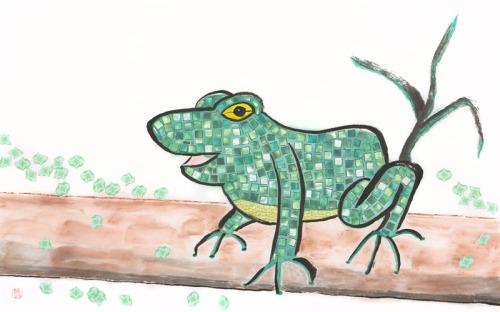
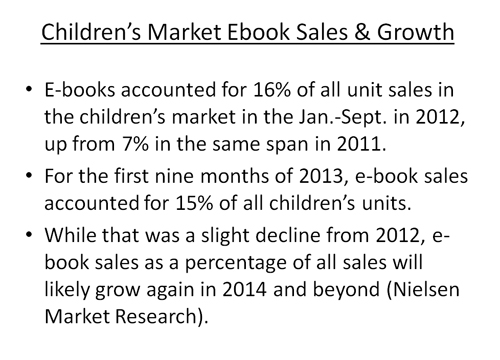
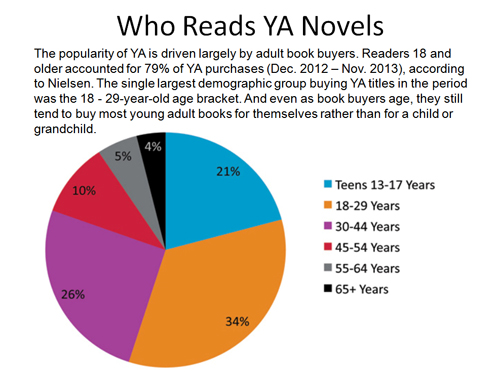

Thank you for this, Kathy :D